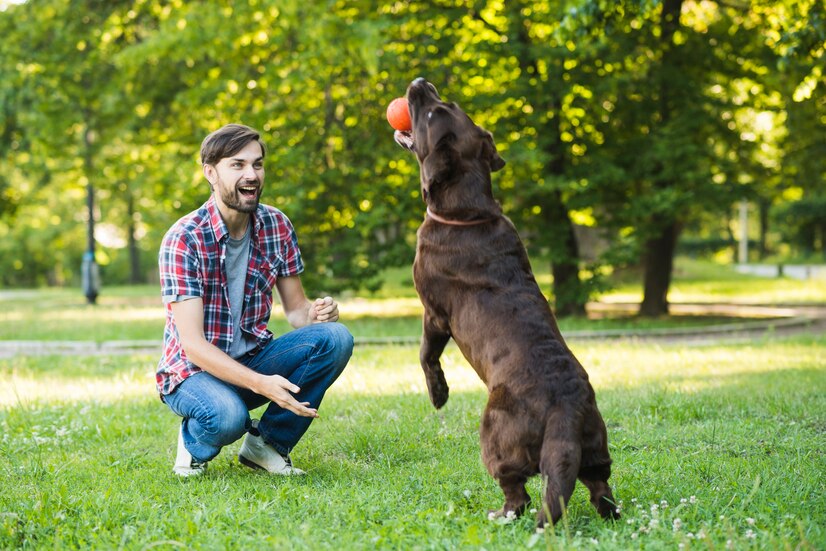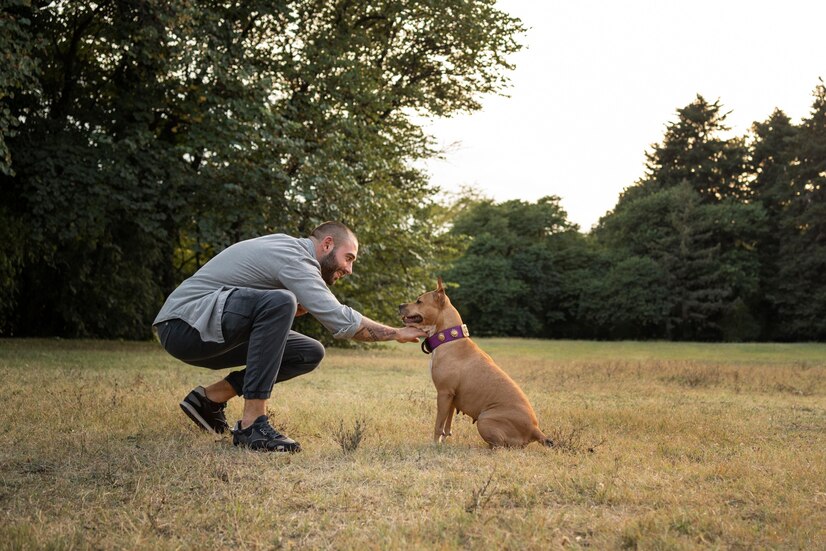Training & Treats: How To Use Positive Reinforcement Effectively


Positive reinforcement is a powerful method for training dogs, shaping their behavior by rewarding them for desired actions. This approach encourages the dog to repeat the behavior to receive the reward, be it treats, affection, or verbal praise.
If you want to use positive reinforcement for your dog effectively, you must understand the key principles of this approach to achieve what you’re aiming for. So, without further ado, let’s dive into these key principles and learn how to use positive reinforcement to train your dog.
The Science Behind Positive Reinforcement

Positive reinforcement is a cornerstone concept in the science of behaviorism, primarily associated with the work of psychologist B.F. Skinner. It involves the introduction of a favorable stimulus immediately following a desired behavior to increase the likelihood of that behavior recurring.
The fundamental idea is that actions that result in favorable consequences are more likely to be repeated.
In neuroscience, positive reinforcement is understood to influence the brain’s reward system. Incorporating positive reinforcement in dog training is more than just a trend, it is based on solid scientific principles with proven efficacy.
Behavioral science underpins this technique, highlighting how animals, including dogs, learn and adapt their behaviors based on rewards and positive associations. This method strengthens the bond between dogs and their owners and promotes a happier, stress-free learning environment for the canine.
Choosing The Right Treats
When training our canine companions, positive reinforcement is a powerful tool that strengthens the bond between you and your dog. It also encourages good behavior by rewarding them.
Choosing the right treats is crucial in making the training process effective and enjoyable. When picking treats, consider their size, palatability, and healthiness. Small treats ensure quick consumption so training isn’t interrupted, while high-value treats are exceptionally appealing to your dog for those tougher-to-learn commands.
On the other hand, long lasting dog treats engage dogs over an extended period, which helps retain their focus on the task. This sustained interest is vital for training sessions that require repeated actions or commands.
Moreover, maintain a balance between tastiness and nutrition; too many treats can lead to weight gain, so it’s essential to pick treats that are low in calories but still enticing to your furry friend. Remember, the best treat keeps your dog’s attention on the training and their tail wagging enthusiastically!
Timing Is Everything

Canines acquire knowledge by forming associations with environmental cues, a concept known as “classical conditioning.” For instance, if a dog hears the sound of a treat bag rustling, they will eagerly approach, having learned to connect that specific noise with the reward of a treat.
This associative learning can be extended by introducing a clicker; a quick click can signal the dog that a treat will soon follow. Alternatively, verbal affirmations such as “Good” or “Yes” can tell the dog that their behavior was correct. Crucial to this learning process is precise timing in signaling the positive association.
When your dog assumes the sitting position, promptly acknowledge the action with a cheerful “Yes!”. You can also sound your clicker immediately and offer a treat within three seconds. This swift reward after the requested action helps your dog connect the act of sitting with the command “sit,” increasing the likelihood that they will repeat it.
Consistency Is Crucial
Consistency is the cornerstone of effective dog training, particularly when using positive reinforcement techniques. Canines thrive on predictable behavior patterns, so a uniform approach in training sessions is essential. When a dog knows what to expect from its owner, it feels more secure and is likely to respond better to commands.
Moreover, canines acquire new behaviors more swiftly during brief (under 5 minutes) and steady training intervals. Consistency is key, not only in terms of rewards but also in upholding frequent training schedules. Weave the training exercises into your daily routines to ensure the retention of these new abilities, reinforcing their learning.
Consistent training is critical to prevent dogs from slipping back into bad habits. Take the example of a dog trained not to leap onto visitors; if permitted to do so even now and then, the dog may get the impression that the behavior is sometimes permissible.
In addition, all individuals involved with the dog must maintain uniformity in their interactions. Conflicting commands from various family members can impede the dog’s training development.
To ensure effective training, all parties must adhere to a consistent set of commands. It’s also advised to embrace a unified training approach that relies on positive reinforcement and agree on a reward system.
Don’t Punish Your Dog

Punishing Your Dog for Not Listening Can Be Counterproductive in Training. Punishing your dog for not listening might immediately solve disobedient behavior. However, it’s essential to consider the potential adverse effects of punishment in training.
Canine behaviorists have shown that punishment can lead to increased anxiety. This can exacerbate behavioral issues rather than resolve them. A scared or stressed dog may become more erratic, less trusting, and potentially more aggressive due to punishment.
Whether it’s verbal or physical punishment, you must avoid it at all costs. Dog training is all about patience. It’s vital to understand that humans learn at different paces, and so do animals.
Keep The Training Fun
Everybody knows that a disciplined dog is a happy dog, but what’s not often discussed is how crucial it is to keep dog training fun for both the pet and the owner. When training feels like playtime, dogs are more engaged, willing to learn, and build a stronger bond with their humans.
Keeping dog training upbeat and lighthearted encourages your furry friend to look forward to each session. Moreover, when dogs achieve something through play, it boosts their confidence and provides mental stimulation. Training that feels like play can also motivate your dog, reinforcing positive behaviors more effectively.
To make your training fun, you can use your dog’s favorite toys as a reward during training. This reinforces good behavior and keeps the activity playful and fun. You can also try to mix things up and spice up your dog training.
Lastly, offer plenty of praise, affection, and treats. Celebrate all wins, no matter how small, to keep morale high.
Conclusion
Positive reinforcement is an effective, science-backed method for training dogs. Any dog owner can improve their training regimen by understanding the above-mentioned principles. Training your dog reinforces good behavior and builds a trusting relationship with your furry friend.
Read Also:









All Comments
Rebekah Ashley
18 February, 2024
Keep up the fantastic work!
Reply